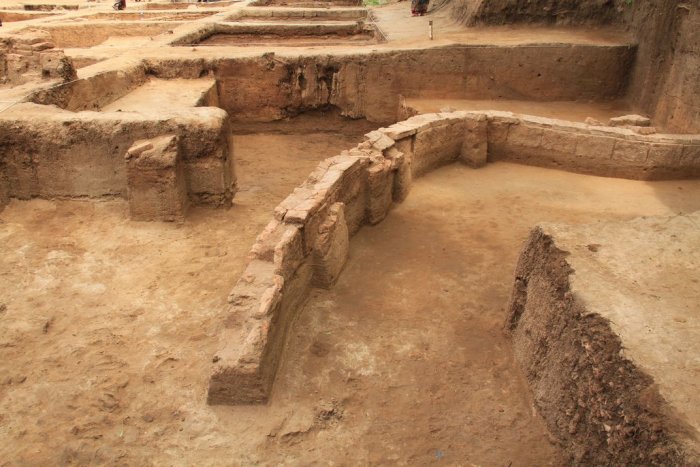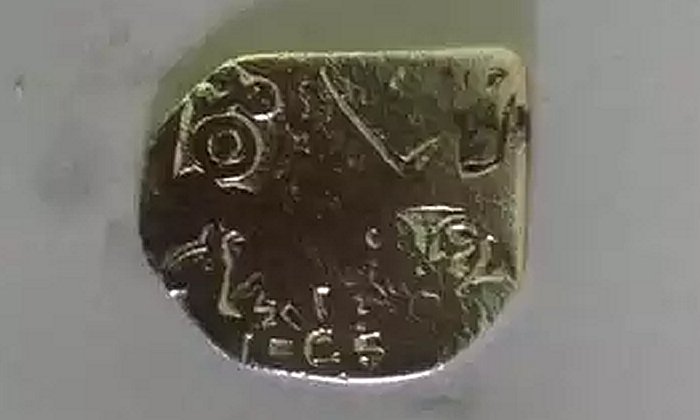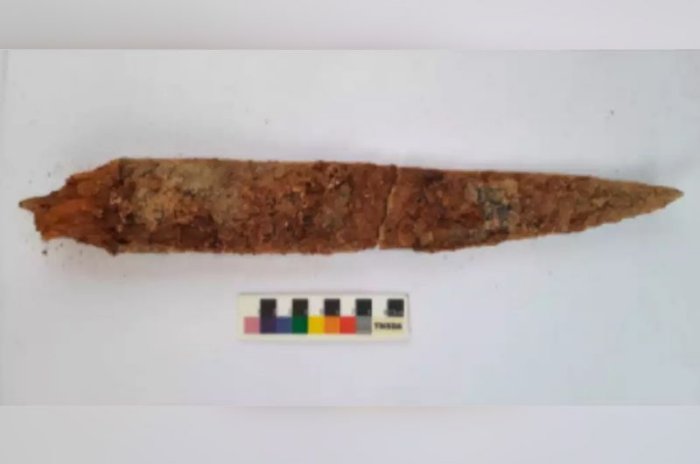Conny Waters – AncientPages.com – While excavating at Konthagai in the Keeladi cluster in Tamil Nadu, India scientists made an interesting archaeological discovery.
Among eleven burial urns that are believed to belong to the Keeladi civilization, they found a 2,500-year-old wooden dagger, along with human remains.

The site where the ancient Keeladi dagger was unearthed. Credit: Tamil Nadu Department of Archaeology
The ancient dagger is considered a rare discovery because it is still so well-preserved. The artifact may also shed new light on the ancient Keeladi civilization.
Keeladi (also Keezhadi) is today an important archaeological site, located on the banks of the Vaigai River, near the southern tip of India.
Once in the past, Keezhadi was an urban settlement of Sangam Age on the Banks of River Vaigai’. The Keeladi civilization in the Sivaganga district flourished 2,600 years ago.
As previously reported on AncientPages.com “Keeladi is today a small village, but it is a special place, which was once an essential part of Tamil history, which is now systematically exposed by the Archaeological Survey of India.” 1
Archaeologists have made many interesting finds in the region. Among others, the Keeladi discoveries include one of the largest human habitations of the Sangam Age (first to third century A.D), parts of homes like brick walls, wells, storages, and mud vaults, pottery of various kinds and purposes, and rusted old coins, shells, glᴀss, weapons, small tools made of bones and iron, embedded in layers of soil, beads.

The coin has the figures of the sun, the moon, a bull and a dog on one (front) side and a half circle and a sign — which looks like the Tamil Tamil letter ‘Ta’ – on the other. Image credit: The Times of India
Last month scientists unearthed a punch-marked silver coin depicting the sun, the moon, a bull, and a dog on one side, and a half-circle. On the other side of the coin was a sign.
The 2,500-year-old dagger discovered now was found along with femurs (thigh bones), a skull and an offering pot.
“The rusted iron dagger has a six-centimeter-long wooden handle. Its steel blade, measuring 40 cm, was found broken into two. This dagger is about 5 cm in width.

According to archaeologists, the dagger is the first of its kind to be found in the region.. Credit: The Times Of India
A broken portion of the lid of the urn was retrieved from inside it. The urn was filled with soil,” The Times of India reports.
Two pieces of the urn lid were found on both sides of the dagger, said Tamil Nadu state department of archaeology deputy director Dr. R Sivanantham, who is heading the excavation in Keeladi. The fact that the wooden handle of the dagger is so well preserved is a rare phenomenon, according to him.
Written by Conny Waters – AncientPages.com Staff Writer
- Conny Waters – Keeladi Ancient Site Of Tamil Nadu – A Punch-Marked Silver Coin Unearthed, AncientPages.com





